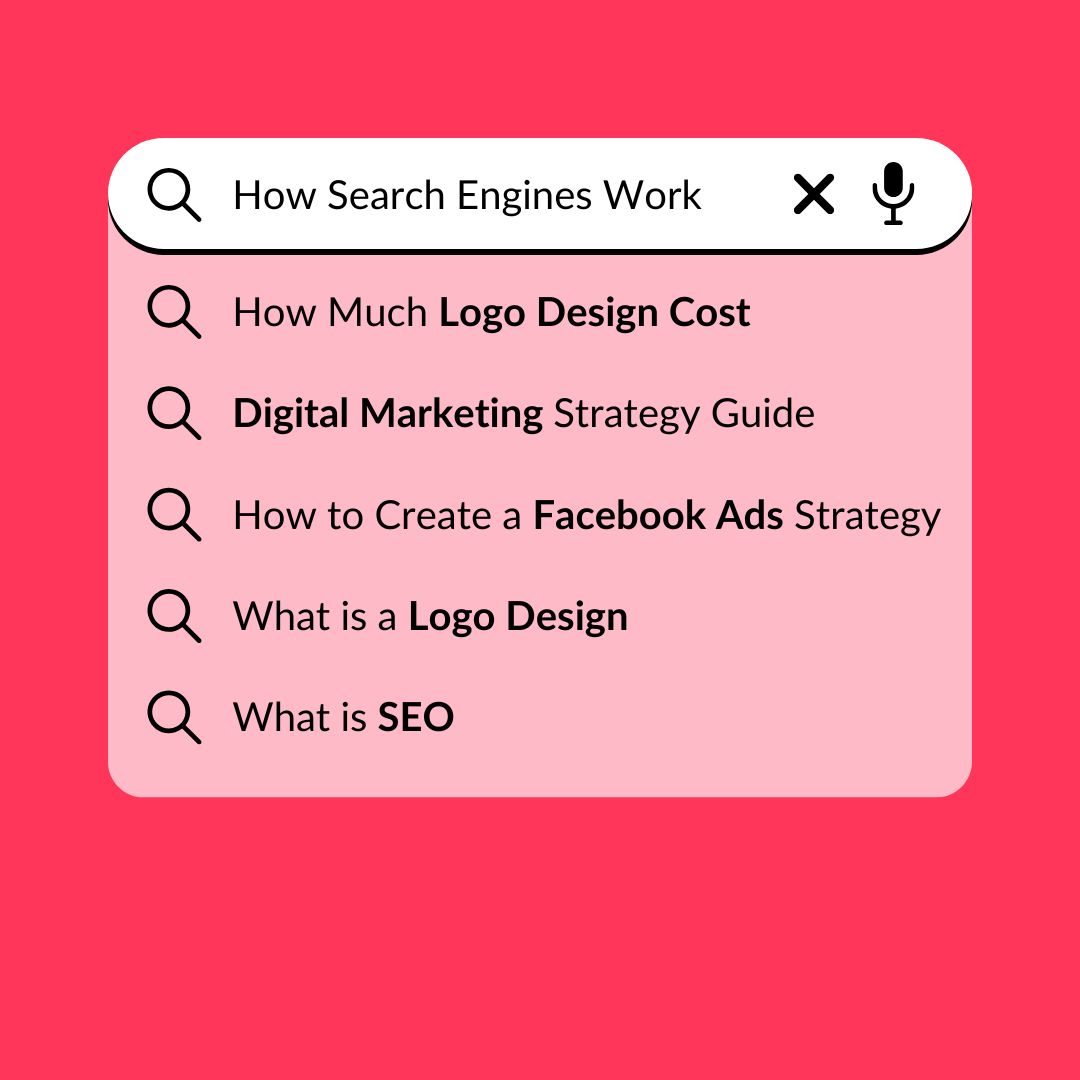How Search Engines Work: Crawling, Indexing & Ranking
If you want your website to rank on Google, you first need to understand how search engines actually work. Google, Bing, and other engines don’t just magically display websites—they use advanced systems to crawl, index, and rank billions of web pages.
By the end of this guide, you’ll know:
- How crawling, indexing, and ranking work
- Why some websites rank higher than others
- The key factors Google uses to evaluate pages
- How you can optimize your site to ensure it gets indexed and ranked
This knowledge is the foundation of effective SEO.
Step 1: Crawling – How Search Engines Discover Content
Search engines use bots (also called spiders or crawlers) to scan the web and find content.
- Crawlers follow links from page to page.
- They discover new or updated content.
- They send that data back to the search engine’s index.
👉 Example: If you publish a new blog post and link it from your homepage, Googlebot will follow that link and crawl your new page.
How to Optimize for Crawling
- Create an XML sitemap and submit it to Google Search Console.
- Use internal linking to connect your pages.
- Avoid orphan pages (pages without links pointing to them).
- Fix broken links (404 errors).
📌 Internal link: Types of Marketing Automation & Their Benefits — just like crawlers connect your pages, automation connects marketing touchpoints.
Step 2: Indexing – How Search Engines Store Content
After crawling, search engines analyze and store your content in their index (like a giant online library).
What Happens During Indexing?
- Google checks your content relevance and quality.
- It processes your keywords, meta tags, images, and structured data.
- Duplicate or low-quality content may not be indexed.
💡 Tip: Not every page gets indexed. Thin, spammy, or duplicate content is often skipped.
How to Optimize for Indexing
- Write unique, valuable content that answers user intent.
- Use proper title tags, meta descriptions, and headers.
- Implement schema markup (structured data).
- Ensure pages load fast and are mobile-friendly.
Step 3: Ranking – How Search Engines Order Results
Once pages are indexed, Google decides which ones appear first for a search query.
This is determined by 200+ ranking factors, but the main ones are:
- Relevance: Does the page match the search intent?
- Authority: Does the site have strong backlinks and credibility?
- User Experience (UX): Is the site fast, mobile-friendly, and easy to navigate?
- Freshness: Is the content up to date?
👉 Example: If someone searches “best project management tools”, Google looks at dozens of ranking signals to decide which page deserves the top spot.
How to Optimize for Ranking
- Do keyword research and target search intent.
- Build authoritative backlinks from trusted sources.
- Improve Core Web Vitals (speed, interactivity, stability).
- Regularly update old content with fresh insights.
Why Crawling, Indexing & Ranking Work Together
- Without crawling, your site won’t be discovered.
- Without indexing, your site won’t appear in search results.
- Without ranking, your site won’t get traffic.
Think of it as a three-step funnel:
- Crawling = discovery
- Indexing = storage
- Ranking = visibility
Real-World Example of SEO in Action
- An e-commerce site ensures all product pages are linked in the sitemap.
- Google crawls those pages and indexes them.
- With optimized content and backlinks, the site ranks high for “affordable shoes online.”
Pro Tips to Ensure Your Website Gets Indexed & Ranked
✅ Submit your sitemap to Google Search Console
✅ Check index coverage reports regularly
✅ Avoid duplicate/thin content
✅ Build a strong internal linking structure
✅ Use robots.txt carefully (don’t block important pages)
✅ Optimize mobile-first
Common SEO Mistakes That Hurt Crawling & Indexing
❌ Blocking crawlers with robots.txt by mistake
❌ Using duplicate meta tags across pages
❌ Overusing JavaScript without fallback content
❌ Publishing low-quality, thin content
❌ Forgetting to fix broken links
FAQs About Crawling, Indexing & Ranking
Q1: How do I check if my site is indexed by Google?
Use site:yourdomain.com in Google search.
Q2: How long does it take for Google to index a new page?
It can take a few hours to several weeks, depending on crawl budget and authority.
Q3: Can I force Google to index my page faster?
Yes—submit the URL directly in Google Search Console’s “Inspect URL” tool.
Q4: Why is my site crawled but not indexed?
Possible reasons: thin content, duplicate pages, or crawl errors.
Conclusion: Master the Basics of SEO
Understanding crawling, indexing, and ranking is the foundation of SEO success. Without them, your site won’t appear in search results—no matter how great your content is.
🚀 Next Steps:
- Audit your site for crawl and index issues in Google Search Console.
- Strengthen your SEO foundation with internal linking and structured data.
- Continue learning with our guide on What is SEO? A Beginner’s Guide.

